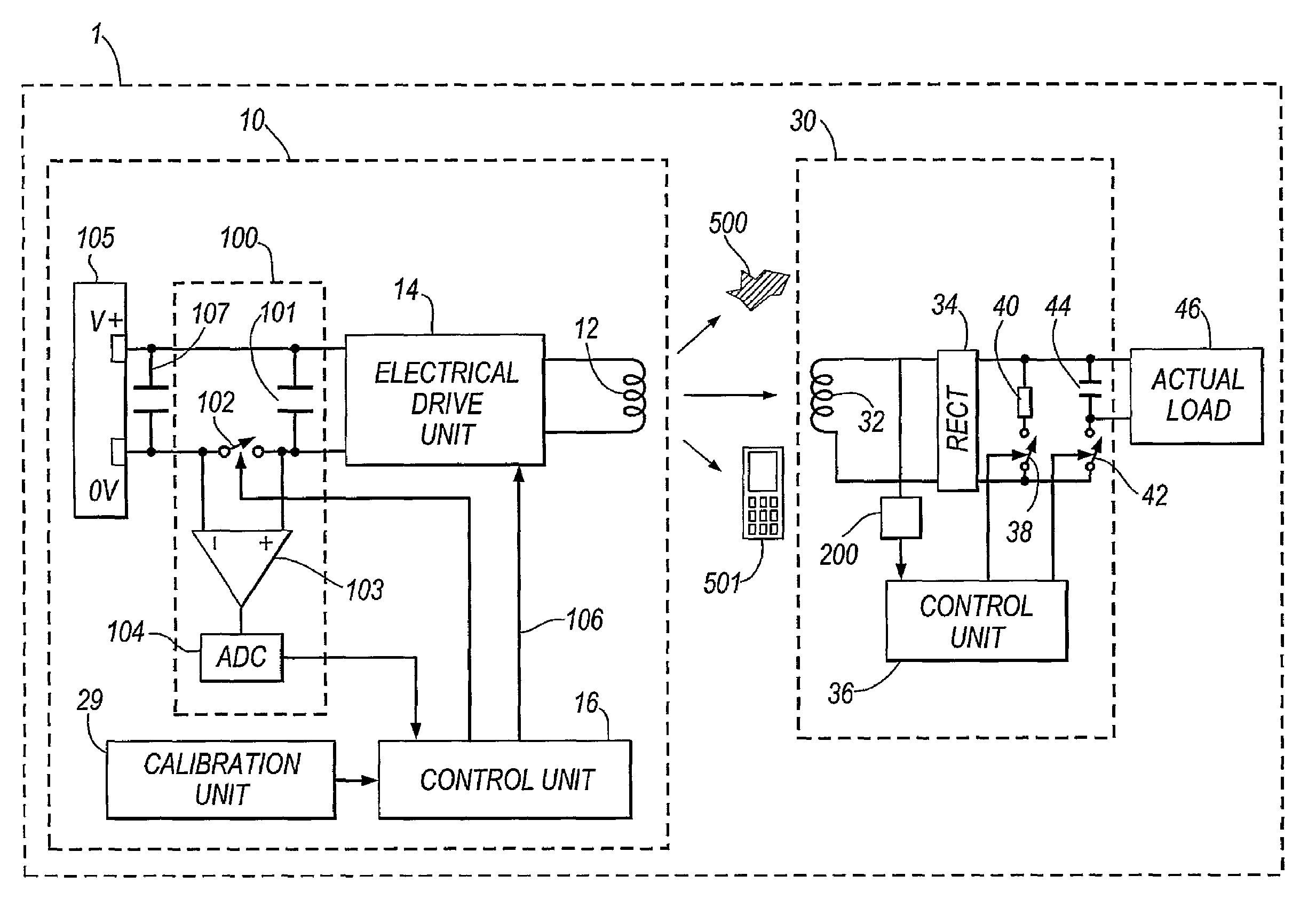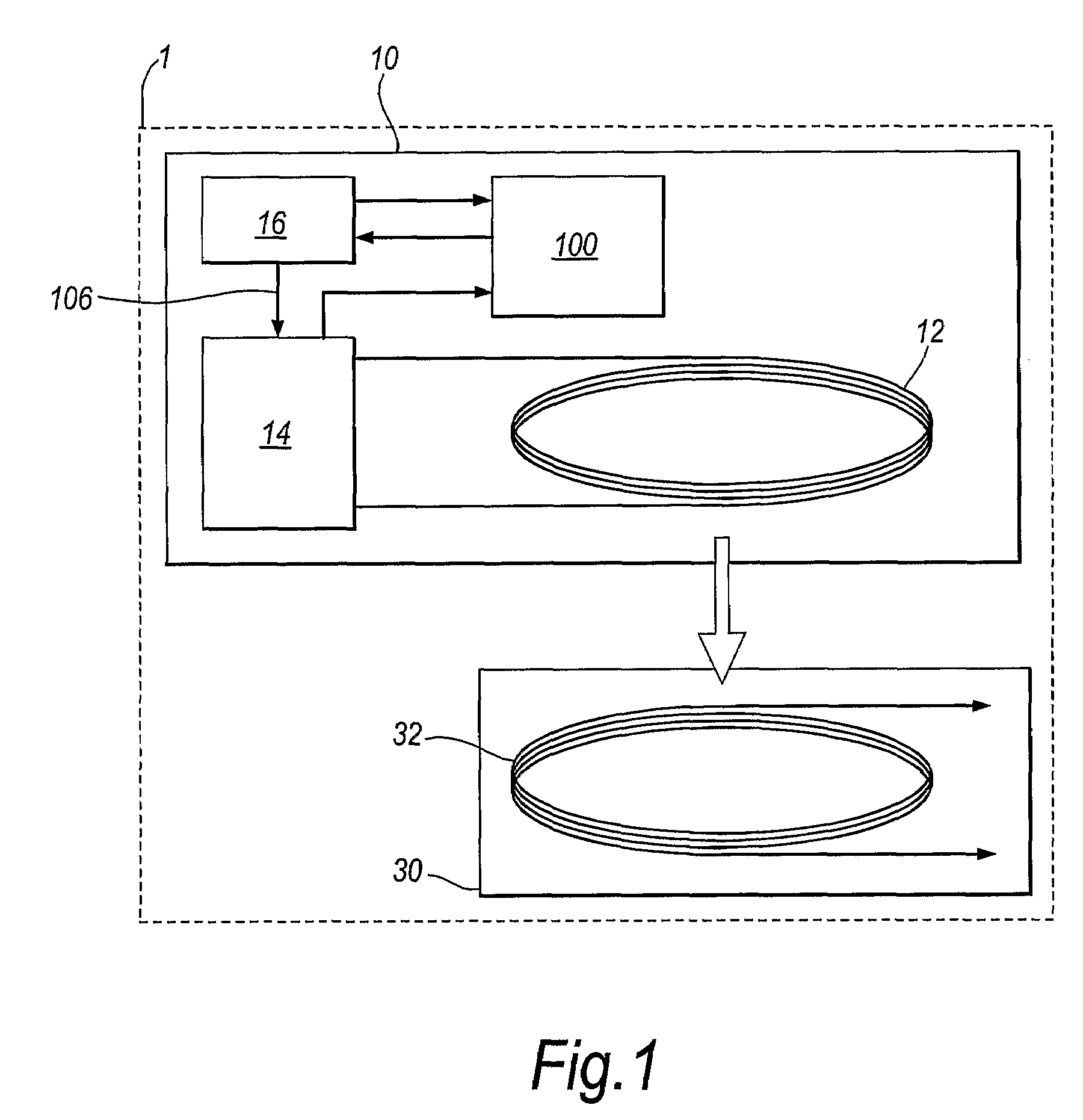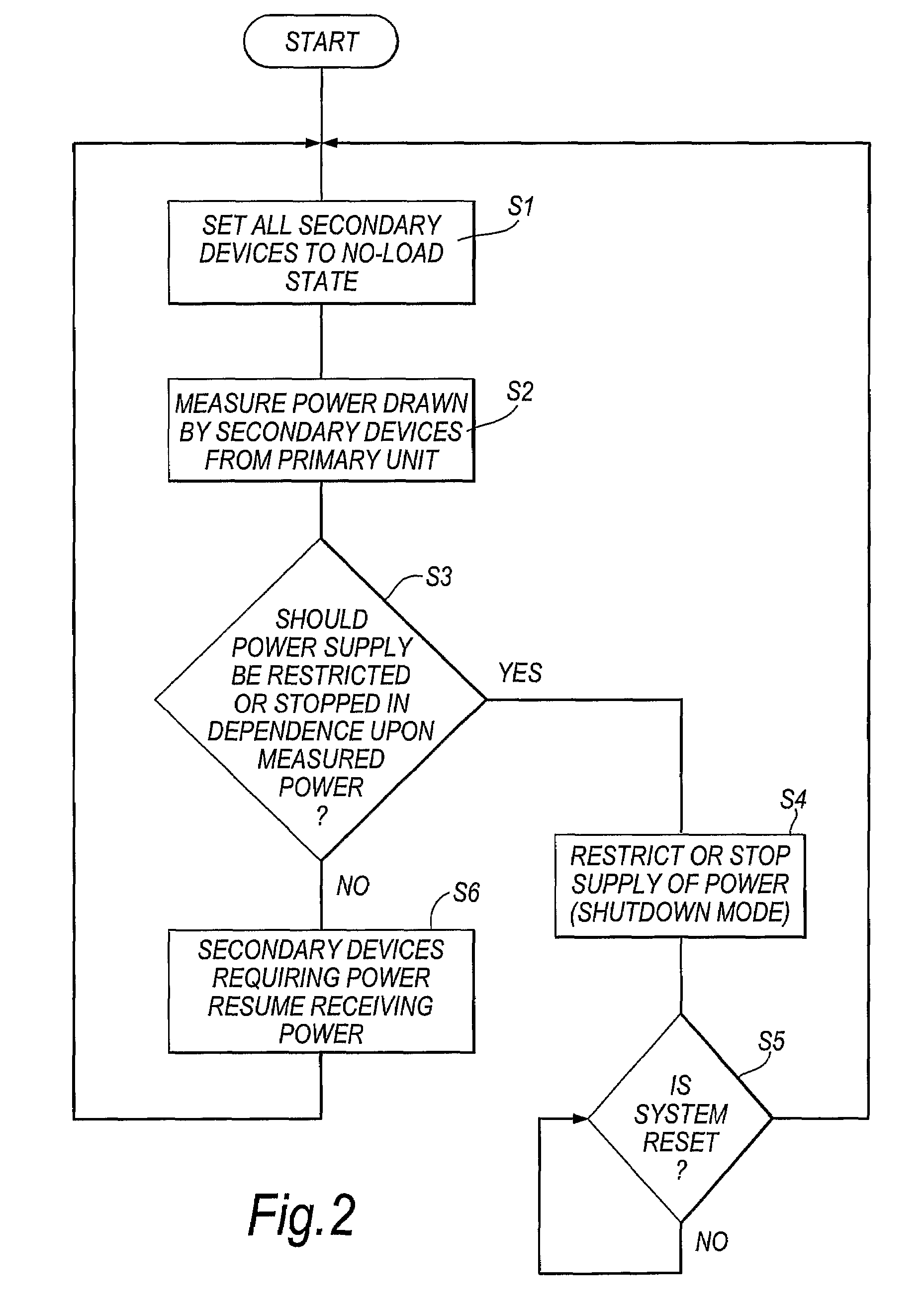Controlling inductive power transfer systems
a technology of inductive power transfer and control system, which is applied in the direction of process and machine control, instruments, pulse techniques, etc., can solve the problems of system failure, loss of isup>2/sup>r losses in the primary coil, and system failure to meet the requirements of the primary uni
- Summary
- Abstract
- Description
- Claims
- Application Information
AI Technical Summary
Benefits of technology
Problems solved by technology
Method used
Image
Examples
first embodiment
[0119]FIG. 4 shows parts of an inductive power transfer system according to the present invention. The system 1 has a primary unit 10 and a secondary device 30. FIG. 4 also shows a parasitic load 500 on the primary unit, caused for example by a foreign object placed in the vicinity of the primary unit 10. The secondary device 30 in this case is assumed to be carried in or by a host object such as a portable electrical or electronic device. As explained hereinbefore the secondary device 30 and / or host object also inevitably impose a “friendly” parasitic load 501 on the primary unit 10.
[0120]As described earlier with reference to FIG. 1, the primary unit 10 comprises a primary coil 12, an electrical drive unit 14, a control unit 16 and a power measurement unit 100. The electrical drive unit 14 has an input connected to an output of the control unit 16 supplying the AC voltage signal 106. The output nodes of the electrical drive unit 14 are connected to the primary coil 12.The electric...
third embodiment
[0197]FIG. 12 shows parts of a power transfer system according to the present invention. This system implements the shutdown detection method of FIG. 11 using an RFID communication method.
[0198]The FIG. 12 system comprises a plurality of secondary devices 6001, 6002, . . . , 600n. The system of FIG. 12 also comprises a primary unit 700. The primary unit 700 comprises an RFID unit 710, a control unit 720 and a power measurement unit 730. The control unit 720 corresponds generally to the control unit 16 described previously with reference to FIG. 1, and the power measurement unit 730 corresponds generally to the power measurement unit 100 described in reference to FIG. 1.
[0199]The features of the secondary device 600 are generally the same as those of the secondary device 30 in FIG. 4 except that the elements 38, 40, 42, 44 and 200 may be omitted. Instead of these elements, each secondary device 600 comprises its own load measuring unit 610 and an RFID unit 620. The load measuring uni...
PUM
 Login to View More
Login to View More Abstract
Description
Claims
Application Information
 Login to View More
Login to View More - R&D
- Intellectual Property
- Life Sciences
- Materials
- Tech Scout
- Unparalleled Data Quality
- Higher Quality Content
- 60% Fewer Hallucinations
Browse by: Latest US Patents, China's latest patents, Technical Efficacy Thesaurus, Application Domain, Technology Topic, Popular Technical Reports.
© 2025 PatSnap. All rights reserved.Legal|Privacy policy|Modern Slavery Act Transparency Statement|Sitemap|About US| Contact US: help@patsnap.com



